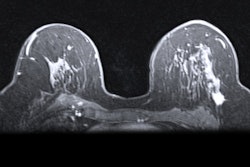Wednesday, November 30 | 3:00 p.m.-4:00 p.m. | W7-SSBR09-3 | Room E451B
In this talk, researchers will demonstrate how initial ultrafast dynamic contrast-enhanced MRI (DCE-MRI) can aid in predicting complete pathologic response in breast cancer patients.Dr. Toulsie Ramtohul from the Paris Sciences et Lettres Research University will present the study, which looked at the links between perfusion parameters on initial ultrafast DCE-MRI and early prediction for pathological response after neoadjuvant chemotherapy in patients.
The researchers looked at six parameters in their prospective study of 50 women with an average age of 49 years. Out of these, 20 achieved pathologic complete response, while 25 had residual cancer burden.
Out of the six parameters explored, one showed promise in prediction. This parameter, known as the wash-in slope, measures the slope between the time of contrast inflow onset and the time of peak intensity in breast tumors.
The team found that a wash-in slope cutoff value of 1.6% per second had a sensitivity of 94% (17 of 18 women) and a specificity of 59% (19 of 32 women) for complete pathologic response. Wash-in slope also was also the factor most associated with predicting complete pathologic response.
Also, an area under the receiver operating characteristic curve (AUC) of 0.92 was achieved with a prediction model using the wash-in slope cutoff value, tumor-infiltrating lymphocytes, and HER2 positivity.
See what else the team found in their study at the presentation.



.fFmgij6Hin.png?auto=compress%2Cformat&fit=crop&h=100&q=70&w=100)





.fFmgij6Hin.png?auto=compress%2Cformat&fit=crop&h=167&q=70&w=250)











